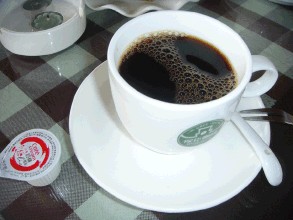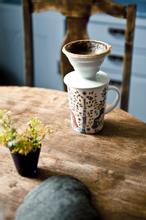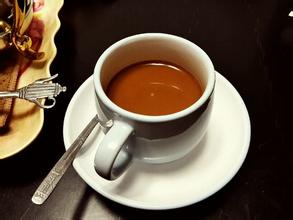Puerto Rico boutique coffee bean flavor taste manor variety brand introduction
On 6 November 2012, Puerto Rico held its fourth referendum. The referendum consists of two rounds of voting. In the first round, Puerto Ricans voted on "whether they want to change the status quo in their relations with the United States". 1.8 million people were eligible to vote, 65000 gave up the first round of voting, and 54 per cent of those who took part in the vote supported a change of relationship. Subsequently, Puerto Ricans made a choice on how to make a change, with three options for voters to choose from: "become a state of the United States", "expand autonomy" and "full independence". In this round of voting, only 1.3 million people voted, 61 per cent supported becoming the 51st state of the United States, about 33 per cent wanted to expand autonomy, while only 5 per cent were in favor of full independence Puerto Ricans were the general name of the residents of United States Puerto Rico in Central America and the Caribbean. There are about 3.4 million people (1979). Spanish and English are widely used. More Catholic. The earliest inhabitants of Puerto Rico were Arawak and Caribbean Indians. In 2012, whites of European origin accounted for about 73% of the population, mixed-race people accounted for 23%, and blacks accounted for 4%. There are also more than 20,000 Americans and immigrants from other countries. 20% of the economically independent population are engaged in industry, 17.2% in commerce, 7.3% in agriculture, 17% in construction and transport, and 33.7% in service industries. [7] the citizens of Puerto Rico are all United States citizens in a complete sense, and they have the right to vote in national elections after emigrating to the United States.
In Spanish, Puerto Rico means "port of wealth". The history of coffee in Puerto Rico dates back to 1736, when coffee seedlings were brought into the country by early Spanish settlers. In the 18th world, sugar cane was the main economic crop, so little attention was paid to it. At the beginning of the nineteenth century, the French began to emigrate from the Corsica island in the Mediterranean to Puerto Rico because of European politics. Crowded by the Spaniards, many French settled in Yaoke Yauco in southwestern Puerto Rico. Yaoke's geographical environment is more hilly, so the French decided to grow coffee. After half a century of hard work, the quality has been affirmed by the market, which has established the position of Yauco Selecto coffee in the market in the future.
In the 1860s, the coffee produced in the Yaoke area of Puerto Rico won the reputation of high-end coffee and spread all over Europe. At that time, emperors and queens of various countries regarded it as the best coffee, and the kings and queens of many countries and European popes even recognized only Yaoke coffee when they chose coffee. And designated for the Vatican to drink the royal coffee. Island Coffee-Puerto Rico
Puerto Rico's coffee beans are carefully planted, pure, fragrant and heavy, of which the best coffee is Yauco Selecto, which means "Selecto". Yaocote Coffee is grown only on three farms in the southwest of the island, San Pedro, Caracolillo and La Juanita. It is a truly high-quality coffee with a strong flavor and a long aftertaste. The hills of southwestern Puerto Rico have a mild climate, a long period of plant maturity (from October to February) and high-quality clay. People here have been using an eco-friendly, intensive planting method, picking only fully ripe coffee beans and then flushing them in a drum device for 48 hours. Yaocote selected coffee beans are preserved with sheepskin before sale and will not be removed until order and delivery to ensure the best freshness of the coffee. Relevant U.S. government employees, such as FDA and USEA, will also be present at the transaction, and they are here to monitor producers' compliance with federal regulations. There are also professional reviewers who randomly take one bag of coffee from every 50 bags as samples and use international gauges to identify the quality of coffee beans, all in order to ensure the quality of the real Yaocote selected coffee.
Island Coffee-Puerto Rico
And Jaime Fortuno, the president of Escoki's Escogido Yauco agency, pays silent attention to all this work every year, even the smallest details. Fortuno is an investment banker who graduated from Harvard Business School. He was determined to seize every opportunity to open up a market for top coffee in Puerto Rico. He expects a maximum annual output of 3000 bags of 45kg each, less than 1 per cent of the island's total coffee production.
This is the reason why Puerto Rico and Puerto Rico Yukot select Yauco Selecto differently. Yukot chooses manor beans, which is the joint brand of Puerto Rico San Pedro, Caracolillo and La Juanita.

Important Notice :
前街咖啡 FrontStreet Coffee has moved to new addredd:
FrontStreet Coffee Address: 315,Donghua East Road,GuangZhou
Tel:020 38364473
- Prev

Introduction to the characteristics of Dominican Coffee Flavor Variety
Carefully selected in this way, the high-quality Dominican coffee exudes a faint aroma and gives people a faint fruity aroma with a lingering finish and a smooth and smooth finish. Dominica coffee beans (Caribbean) Dominica coffee is grown in highlands and lowlands, and its taste is slightly different. The upland is sour, but the taste is rich; the lowland is less sour.
- Next

Burundian Coffee Flavor and taste introduction to boutique coffee beans in manor area
Londi Coffee bears a striking resemblance to neighboring Rwanda, where coffee from the two countries is often confused. Burundian coffee is mainly grown in bourbon, with traditional wet processing of coffee cherries. Its boutique coffee is characterized by elegant sweetness and bright citrus aromas. Burundi is a small landlocked country located on the border between eastern and central Africa.
Related
- Detailed explanation of Jadeite planting Land in Panamanian Jadeite Manor introduction to the grading system of Jadeite competitive bidding, Red bid, Green bid and Rose Summer
- Story of Coffee planting in Brenka region of Costa Rica Stonehenge Manor anaerobic heavy honey treatment of flavor mouth
- What's on the barrel of Blue Mountain Coffee beans?
- Can American coffee also pull flowers? How to use hot American style to pull out a good-looking pattern?
- Can you make a cold extract with coffee beans? What is the right proportion for cold-extracted coffee formula?
- Indonesian PWN Gold Mandrine Coffee Origin Features Flavor How to Chong? Mandolin coffee is American.
- A brief introduction to the flavor characteristics of Brazilian yellow bourbon coffee beans
- What is the effect of different water quality on the flavor of cold-extracted coffee? What kind of water is best for brewing coffee?
- Why do you think of Rose Summer whenever you mention Panamanian coffee?
- Introduction to the characteristics of authentic blue mountain coffee bean producing areas? What is the CIB Coffee Authority in Jamaica?

